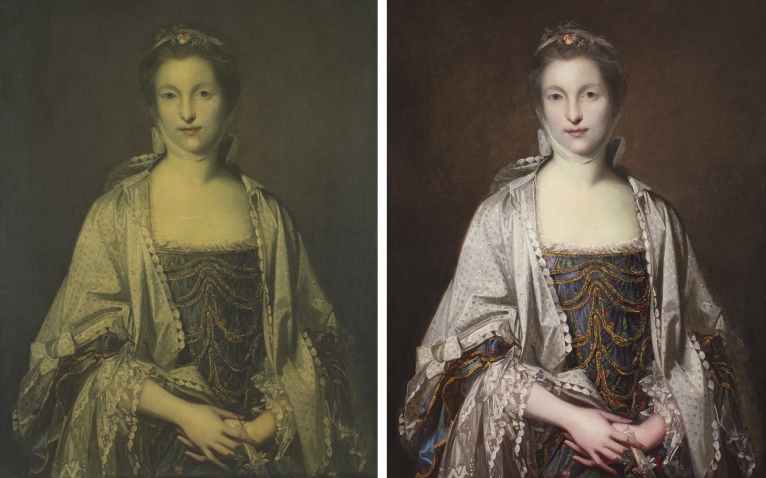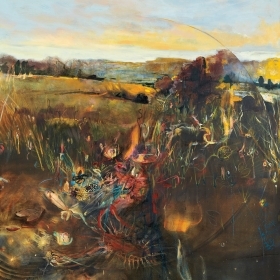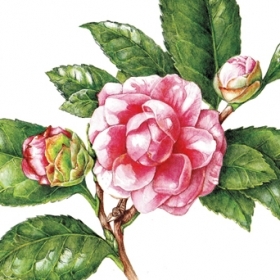It was tantalizing to imagine: A painting in the Davis Museum collection by Sir Joshua Reynolds (1723–1792), the most prominent 18th-century portraitist in England. The picture, called Portrait of a Lady, was deemed too fragile to display when it was donated in 1963, so it remained in storage. In 2015, as Davis curators prepared to reinstall the permanent collection, they were inspired by a conversation with Ginger Maloney Lawrence ’64, the donor’s daughter-in-law, to step up efforts to restore and exhibit the painting.
The portrait, which the passage of time and the predations of varnish had conspired to turn a rather sickly shade, had earned the nickname of “Green Lady.” Conservator Theresa Carmichael, of Bedford, Mass., was called in to clean and repair the painting, while frame conservation students at Smith College worked with a professional restorer to rebuild the ornate frame.
In honor of the portrait’s restoration, the Davis Museum and Friends of Art sponsored a symposium on Feb. 19, “Davis Discoveries: The Green Lady Mystery.” The event featured presentations not only by conservators but also by art historian and Wellesley alumna A. Cassandra Albinson ’96, of the Harvard Art Museums.
Albinson, an expert on 18th-century portraiture, cast doubt on the Reynolds attribution. She explained that the Davis’s portrait was unlike others in Reynolds’ oeuvre. The static, frontal pose, plain background, and embellishments to the sitter’s costume did not seem consistent with Reynolds’ portraits. Instead, she hypothesized that the portrait could be the work of John Astley (1724–1787), who, like Reynolds, had studied under Thomas Hudson, or another painter in Reynolds’ circle.
Although the painting was included in at least one catalog of Reynolds’ work published in the early 20th century, its history revealed some discrepancies “that gave me pause,” Albinson said. Interestingly, “Portrait of a Lady” was not included in David Mannings’ complete catalog of Reynolds’ work published in 2000.
Eve Straussman-Pflanzer, assistant director of curatorial affairs/senior curator of collections, and Claire Whitner, associate curator, encouraged Albinson to share her hypothesis about Astley. “The painting’s attribution remains open,” says Straussman-Pflanzer, adding that the precise wording of the painting’s label in the gallery has not been decided on, “but [Albinson’s] ideas will certainly inform our decision.”
Whether Reynolds painted the portrait or not, the questions about its history provide rich material for ongoing study and research by students and scholars. “We still consider this painting a fine example of 18th-century portraiture, regardless of the attribution, and we’re proud to display it in our permanent collection galleries,” Whitner says.








We ask that those who engage in Wellesley magazine's online community act with honesty, integrity, and respect. (Remember the honor code, alums?) We reserve the right to remove comments by impersonators or comments that are not civil and relevant to the subject at hand. By posting here, you are permitting Wellesley magazine to edit and republish your comment in all media. Please remember that all posts are public.